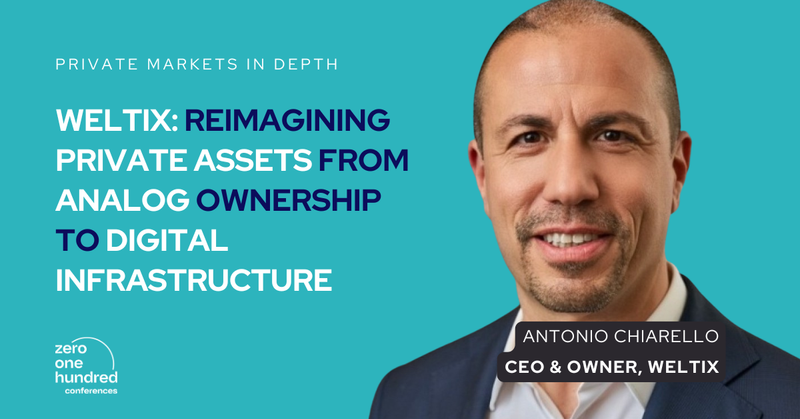Private markets are entering a new era where trust, compliance, and technology converge. While public markets enjoy automation and transparency, private assets still depend on paper-based, fragmented systems.
Antonio Chiarello, CEO of Weltix, argues that the next leap forward is not just digitization, but the creation of digital infrastructures that redefine ownership. In this conversation, he discusses why friction is structural rather than technological, how regulation enables innovation, and how programmable liquidity and transparency can channel more private capital into real economic growth.

What is the biggest friction point today in transforming private assets from analog ownership models into digital infrastructures?
The real friction is not technological — it’s structural.
Private markets still rely on fragmented processes: notaries, local registries, manual compliance checks, and dozens of intermediaries managing documents and payments. Each transaction involves legal, fiscal, and operational layers that don’t communicate with each other.
At Weltix, we digitalize that entire lifecycle — issuance, subscription, custody, reporting, and secondary trading — within a single regulated infrastructure. This means transforming a paper-based, “notary-centered” market into a trust-based digital infrastructure. It’s not about speed only: it’s about legal reliability and interoperability.
How do you define “digital infrastructure” in the context of private assets? What are its core components?
For us, a true digital infrastructure combines technology, compliance, and custody.
At Weltix, these three layers are embodied in our regulated entities:
Weltix Fiduciaria - 100% digital, which acts as custodian and tax substitute for private assets, enabling digital ownership and privacy.
Weltix ECSP Platform, authorized under EU Regulation 2020/1503, which manages placements and co-investments in equity, SAFE, or minibonds.
Weltix DLT Registry, recently authorized by Consob under the Italian FinTech Decree, which allows us to record, issue, and manage tokenized instruments directly on blockchain.
Together, they form a bank-grade, legally binding infrastructure for private assets — not just a platform or marketplace, but a compliant operating system.
What is the role of regulation in this transformation? Are current frameworks in Italy and across Europe adequate, or do they need to evolve?
Regulation is the real enabler of innovation in finance.
Italy, with the FinTech Decree (DL 25/2023), was among the first in Europe to define a national framework for DLT-based financial instruments, granting Consob and Banca d’Italia the power to authorize “Registry Managers”. Weltix is among the first to be listed by Consob in this new register.
The combination of European ECSP rules, national fiduciary law, and the DLT regime creates a powerful toolkit.
However, Europe still needs greater interoperability: cross-border tokenization, unified identity management (eIDAS 2.0), and digital custody passporting are the next frontiers. Regulation is catching up, but the market is moving faster.
What benefits do you expect for investors and issuers as private assets become more digitalized?
The benefits are structural and quantifiable:
Operational efficiency — digital issuance and custody can reduce time-to-close by up to 70% compared to traditional SPV structures.
Cost optimization — we eliminate redundant intermediaries (notaries, accountants, CCIAA filings), lowering administrative costs by 60–80%.
Transparency and traceability — smart contracts and digital signatures create an immutable audit trail.
Liquidity and governance — investors can trade or transfer stakes via fiduciary or tokenized models, while issuers maintain a single interlocutor in their cap table.
Ultimately, it’s about trust through technology — giving private investors the same confidence they have in public markets, without compromising privacy or compliance.
What impact can simpler, more accessible private investment tools have on real-world economic growth?
Private capital fuels innovation. When we simplify access through digital onboarding, lower tickets, and automated compliance, we unlock a new flow of resources towards SMEs and scale-ups.
In Italy alone, HNWI and upper affluent investors hold over €2 trillion in financial wealth, yet only a fraction is allocated to private assets.
Weltix aims to bridge this gap between private banking and corporate finance, connecting wealth managers to unlisted companies through regulated digital channels. Every euro that flows more efficiently into the real economy strengthens entrepreneurship, employment, and long-term competitiveness.
What are the greatest risks or challenges — technical, legal, market, or operational — in this transition?
The main challenge is synchronizing innovation and regulation.
Building a digital infrastructure that is both efficient and compliant requires reconciling blockchain logic — open, decentralized, borderless — with existing legal frameworks that are often jurisdictional and paper-based.
We’re addressing this through regulated hybridization: the blockchain doesn’t replace the law; it enforces it programmatically. Smart contracts mirror legal clauses, and digital signatures have full legal value.
Operationally, the key risk is data security and custody — that’s why Weltix uses bank-grade architecture and operates under Consob and MIMIT oversight.
For your investors (HNWI, family offices, private banks), how do you manage the interface between traditional expectations and digital innovation?
By speaking both languages.
HNWI and private banks want innovation without losing control, confidentiality, or fiscal efficiency. That’s exactly what Weltix Fiduciaria 100% digitale delivers: a digital interface that looks like a modern app but behaves like a fiduciary mandate.
We combine user-centric design with the legal robustness of a trust structure, managing everything from reporting and governance to tax substitution and secondary transactions. It’s fintech built on trust, not on hype.
Do you see a role for secondary markets or marketplaces for trading stakes acquired through Weltix?
Absolutely — and this is where tokenization and DLT play a central role.
Weltix is developing a regulated secondary infrastructure where investors will be able to transfer tokenized assets — shares, minibonds, or fund interests — within a controlled ecosystem.
The goal is not speculation, but liquidity with compliance: trades validated by smart contracts, settled through the fiduciary, and registered on the DLT ledger.
We call it programmable liquidity — a way to bring flexibility to private assets without losing legal substance.
When do you think tokenization and digital infrastructure will become the norm rather than the exception in private investing?
Within this decade.
The first stage — digital onboarding and custody — is already mainstream. The second, tokenization and automated compliance, is happening now under the new regulatory frameworks.
As soon as banks, funds, and wealth managers realize that digital infrastructure doesn’t replace them but amplifies their efficiency and reach, adoption will accelerate exponentially.
Just like dematerialization transformed public markets 30 years ago, tokenization will redefine private markets by 2030 — and Weltix intends to be the reference infrastructure for that shift.
Closing Statement
At Weltix, we don’t just digitalize private assets — we reimagine how trust, ownership, and liquidity coexist.
Our mission is simple: make private investing as seamless, compliant, and connected as public markets, while keeping it deeply human.

